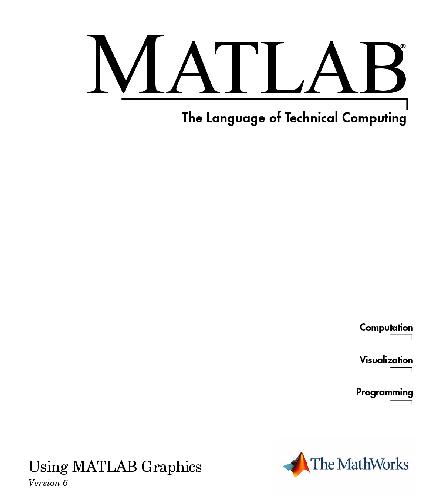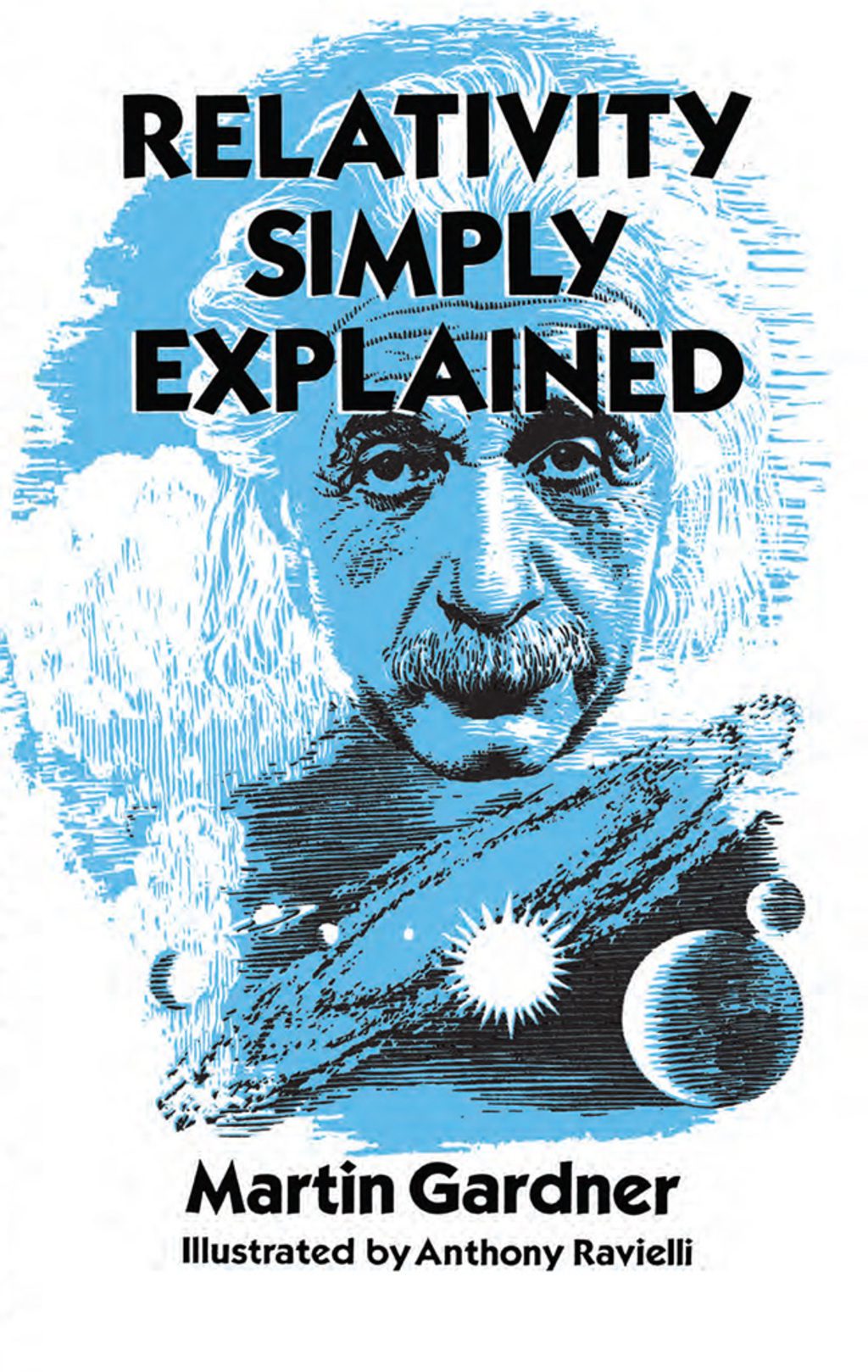Table of contents :
Graphics……Page 19
Overview of MATLAB Graphics……Page 21
Plotting Your Data……Page 22
Anatomy of a Plot……Page 23
Using Functions to Edit Graphs……Page 24
Using Plot Edit Mode……Page 25
Selecting Objects in a Graph……Page 26
Moving and Resizing Objects……Page 27
Editing Objects in a Graph……Page 28
Saving a Graph in MAT-File Format……Page 29
Printing Figures……Page 30
Getting Help……Page 32
Zooming In and Out on an Axes……Page 33
Rotating 3-D Axes……Page 34
Using the Property Editor……Page 35
Starting the Property Editor……Page 36
Editing Object Properties……Page 37
Navigating Among Objects in a Graph……Page 38
Identifying Objects in a Graph……Page 40
Applying Your Changes……Page 41
Adding Plots of Statistics to a Graph……Page 42
Saving Statistics to the Workspace……Page 43
Basic Plotting……Page 45
Creating Line Plots……Page 46
Specifying Line Style……Page 48
Specifying the Color and Size of Lines……Page 50
Adding Plots to an Existing Graph……Page 51
Plotting Only the Data Points……Page 52
Plotting Markers and Lines……Page 53
Line Styles for Black and White Output……Page 54
Setting Default Line Styles……Page 55
Line Plots of Matrix Data……Page 57
Plotting Imaginary and Complex Data……Page 59
Combining Linear and Logarithmic Axes……Page 60
Axis Limits and Ticks……Page 63
Example – Specifying Ticks and Tick Labels……Page 66
Setting Aspect Ratio……Page 67
Displaying Multiple Plots per Figure……Page 70
Default Color Scheme……Page 72
Formatting Graphs……Page 75
Overview……Page 76
Using the Title Option on the Insert Menu……Page 77
Using the Property Editor to Add a Title……Page 78
Using the title Function……Page 79
Adding Legends to Graphs……Page 80
Using the Legend Function……Page 81
Positioning the Legend……Page 82
Editing the Legend……Page 83
Removing the Legend……Page 84
Adding Axis Labels to Graphs……Page 85
Using the Property Editor to Add Axis labels……Page 86
Using Axis-Label Commands……Page 89
Adding Text Annotations to Graphs……Page 91
Creating Text Annotations with the text or gtext Command……Page 92
Text Alignment……Page 96
Example – Aligning Text……Page 97
Editing Text Annotations……Page 98
Mathematical Symbols, Greek Letters, and TeX Characters……Page 99
Using Character and Numeric Variables in Text……Page 101
Example – Multiline Text……Page 102
Drawing Text in a Box……Page 103
Creating Arrows and Lines in Plot Editing Mode……Page 105
Editing Arrows and Line Annotations……Page 106
Adding Plots of Basic Statistics to Graphs……Page 107
Example – Plotting the Mean of a Data Set……Page 108
Statistics Plotted by the Data Statistics Tool……Page 110
Viewing Statistics for Multiple Plots……Page 111
Saving Statistics to the MATLAB Workspace……Page 112
Creating Specialized Plots……Page 115
Types of Bar Graphs……Page 116
Stacked Bar Graphs to Show Contributing Amounts……Page 119
Specifying X-Axis Data……Page 121
Overlaying Plots on Bar Graphs……Page 123
Area Graphs……Page 125
Comparing Datasets with Area Graphs……Page 126
Pie Charts……Page 128
Removing a Piece from a Pie Charts……Page 130
Histograms in Cartesian Coordinate Systems……Page 131
Histograms in Polar Coordinates……Page 133
Specifying Number of Bins……Page 134
Two–Dimensional Stem Plots……Page 136
Combining Stem Plots with Line Plots……Page 139
Three-Dimensional Stem Plots……Page 140
Stairstep Plots……Page 143
Compass Plots……Page 145
Feather Plots……Page 146
Two-Dimensional Quiver Plots……Page 148
Three-Dimensional Quiver Plots……Page 149
Creating Simple Contour Plots……Page 151
Labeling Contours……Page 153
Filled Contours……Page 154
Drawing a Single Contour Line at a Desired Level……Page 155
The Contouring Algorithm……Page 156
Changing the Offset of a Contour……Page 157
Displaying Contours in Polar Coordinates……Page 158
Interactive Plotting……Page 162
Movies……Page 164
Example – Visualizing an FFT as a Movie……Page 165
Erase Modes……Page 166
Displaying Bit-Mapped Images……Page 171
Overview……Page 172
Data Types……Page 174
Indexed Images……Page 176
Intensity Images……Page 177
RGB (Truecolor) Images……Page 179
8-Bit and 16-Bit Indexed Images……Page 181
8-Bit and 16-Bit RGB Images……Page 182
Other 8-Bit and 16-Bit Array Support……Page 183
Summary of Image Types and Numeric Classes……Page 184
Reading a Graphics Image……Page 185
Obtaining Information About Graphics Files……Page 186
Displaying Graphics Images……Page 188
Controlling Aspect Ratio and Display Size……Page 189
CDataMapping……Page 193
XData and YData……Page 194
EraseMode……Page 196
Printing Images……Page 198
Converting the Data or Graphic Type of Images……Page 199
Printing and Exporting……Page 201
Graphical User Interfaces……Page 202
Command Line Interface……Page 203
Specifying Parameters and Options……Page 205
Default Settings and How to Change Them……Page 206
Printing a Figure……Page 209
Printing to a File……Page 213
Exporting to a File……Page 215
Exporting to the Windows Clipboard……Page 220
Printing a Figure at Screen Size……Page 223
Printing with a Specific Paper Size……Page 224
Printing a Centered Figure……Page 225
Exporting in a Specific Graphics Format……Page 226
Exporting in EPS Format with a TIFF Preview……Page 227
Exporting a Figure to the Clipboard……Page 228
Changing a Figure’s Settings……Page 231
Selecting the Printer……Page 233
Setting the Figure Size and Position……Page 234
Setting the Paper Size or Type……Page 238
Setting the Paper Orientation……Page 239
Selecting a Renderer……Page 241
Setting the Resolution……Page 244
Setting the Axes Ticks and Limits……Page 247
Setting the Background Color……Page 249
Setting Line and Text Characteristics……Page 250
Setting the Line and Text Color……Page 252
Setting CMYK Color……Page 254
Producing Uncropped Figures……Page 255
Choosing a Graphics Format……Page 257
Frequently Used Graphics Formats……Page 258
Factors to Consider in Choosing a Format……Page 259
Properties Affected by Choice of Format……Page 261
Description of Selected Graphics Formats……Page 263
How to Specify a Format for Exporting……Page 266
Types of Printer Drivers……Page 268
Factors to Consider in Choosing a Driver……Page 269
Driver-Specific Information……Page 272
How to Specify the Printer Driver to Use……Page 276
Troubleshooting……Page 278
Printing Problems……Page 279
Exporting Problems……Page 282
General Problems……Page 286
Handle Graphics Objects……Page 289
Graphics Object Hierarchy……Page 290
Types of Graphics Objects……Page 291
Handle Graphics Objects……Page 292
Default Values……Page 296
Properties Common to All Objects……Page 297
Graphics Object Creation Functions……Page 299
Example — Creating Graphics Objects……Page 300
High-Level Versus Low-Level……Page 302
Simplified Calling Syntax……Page 303
Setting Property Values……Page 305
Querying Property Values……Page 307
Factory-Defined Property Values……Page 309
How MATLAB Searches for Default Values……Page 310
Defining Default Values……Page 312
Examples — Setting Default LineStyles……Page 313
The Current Figure, Axes, and Object……Page 317
Searching for Objects by Property Values — findobj……Page 319
Copying Objects……Page 320
Deleting Objects……Page 322
Preparing Figures and Axes for Graphics……Page 324
Targeting Graphics Output with newplot……Page 326
Example — Using newplot……Page 327
Testing for Hold State……Page 329
Protecting Figures and Axes……Page 330
The Close Request Function……Page 332
Handle Validity Versus Handle Visibility……Page 333
Saving Handles in M-Files……Page 335
Properties Changed by Built-In Functions……Page 336
Figures Callbacks……Page 339
Function Handle Syntax……Page 341
Why Use Function Handle Callbacks……Page 342
Example — Using Function Handles in a GUI……Page 344
Figure Properties……Page 351
Figure Objects……Page 352
The Position Vector……Page 353
Example – Specifying Figure Position……Page 355
Indexed Color Displays……Page 357
Colormap Colors and Fixed Colors……Page 358
Using a Large Number of Colors……Page 359
Nonactive Figures and Shared Colors……Page 361
Dithering Truecolor on Indexed Color Systems……Page 362
Double Buffering……Page 365
Selecting a Renderer……Page 366
Specifying the Figure Pointer……Page 368
Defining Custom Pointers……Page 369
Interactive Graphics……Page 373
Axes Properties……Page 375
Axes Objects……Page 376
Creating Axes with Specific Characteristics……Page 377
The Position Vector……Page 379
Position Units……Page 380
Placing Text Outside the Axes……Page 381
Multiple Axes for Different Scaling……Page 382
Individual Axis Control……Page 384
Setting Axis Limits……Page 385
Setting Tick Mark Locations……Page 386
Changing Axis Direction……Page 387
Example – Double Axis Graphs……Page 390
Automatic-Mode Properties……Page 393
Specifying Axes Colors……Page 396
Example – Simulating Multiple Colormaps in a Figure……Page 399
Calculating Color Limits……Page 400
Defining the Color of Lines for Plotting……Page 403
Line Styles Used for Plotting – LineStyleOrder……Page 405
3-D Visualization……Page 407
Creating 3-D Graphs……Page 409
A Typical 3-D Graph……Page 410
Line Plots of 3-D Data……Page 411
Mesh and Surface Plots……Page 413
Visualizing Functions of Two Variables……Page 414
Surface Plots of Nonuniformly Sampled Data……Page 416
Parametric Surfaces……Page 418
Hidden Line Removal……Page 420
Types of Color Data……Page 421
Colormaps……Page 422
Indexed Color Surfaces – Direct and Scaled Colormapping……Page 424
Example – Mapping Surface Curvature to Color……Page 425
Altering Colormaps……Page 427
Truecolor Surfaces……Page 428
Texture Mapping……Page 431
Defining the View……Page 433
Setting the Aspect Ratio……Page 434
Default Views……Page 435
Azimuth and Elevation……Page 436
Defining Scenes with Camera Graphics……Page 440
Camera Toolbar……Page 441
Orbit Camera……Page 444
Orbit Scene Light……Page 445
Pan/Tilt Camera……Page 446
Move Camera Horizontally/Vertically……Page 447
Move Camera Forward and Backwards……Page 448
Zoom Camera……Page 449
Camera Roll……Page 450
Walk Camera……Page 451
Camera Graphics Functions……Page 453
Example — Dollying the Camera……Page 454
Graphing the Volume Data……Page 456
Specifying the Light Source……Page 457
Implementing the Fly-Through……Page 458
Low-Level Camera Properties……Page 462
Moving In and Out on the Scene……Page 463
Rotation Without Resizing of Graphics Objects……Page 465
Rotation About the Viewing Axis……Page 466
View Projection Types……Page 468
Projection Types and Camera Location……Page 469
Specifying Axis Scaling……Page 473
Specifying Aspect Ratio……Page 474
Example — axis Command Options……Page 475
Additional Commands for Setting Aspect Ratio……Page 476
Axes Aspect Ratio Properties……Page 478
Default Aspect Ratio Selection……Page 479
Overriding Stretch-to-Fill……Page 481
Effects of Setting Aspect Ratio Properties……Page 482
Example — Displaying Real Objects……Page 486
Lighting as a Visualization Tool……Page 489
Lighting Examples……Page 490
Lighting Commands……Page 491
Light Objects……Page 492
Adding Lights to a Scene……Page 493
Properties That Affect Lighting……Page 496
Face and Edge Lighting Methods……Page 498
Specular and Diffuse Reflection……Page 499
Ambient Light……Page 500
Specular Exponent……Page 501
Back Face Lighting……Page 502
Positioning Lights in Data Space……Page 505
Transparency……Page 507
Making Objects Transparent……Page 508
Specifying Transparency……Page 509
Example – Transparent Isosurface……Page 511
Mapping Data to Transparency……Page 514
Example: Mapping Data to Color or Transparency……Page 515
Selecting an Alphamap……Page 517
Example: Modifying the Alphamap……Page 519
Creating 3-D Models with Patches……Page 521
Behavior of the patch Function……Page 522
Creating a Single Polygon……Page 524
Example – Defining a Cube……Page 526
Patch Color Properties……Page 531
Example – Specifying Flat Edge and Face Coloring……Page 533
Coloring Edges with Shared Vertices……Page 534
Indexed Color Data……Page 536
Interpolating in Indexed Color Versus Truecolor……Page 539
Volume Visualization Techniques……Page 541
Selecting Visualization Techniques……Page 543
Steps to Create a Volume Visualization……Page 544
Volume Visualization Functions……Page 545
Functions for Vector Data……Page 546
Techniques for Visualizing Scalar Data……Page 548
Example – Ways to Display MRI DATA……Page 549
Example – Slicing Fluid Flow Data……Page 555
Modifying the Color Mapping……Page 558
Example – Isosurfaces in Fluid Flow Data……Page 560
Isocaps Add Context to Visualizations……Page 562
Defining Isocaps……Page 563
Example – Adding Isocaps to an Isosurface……Page 564
Using Scalar Techniques with Vector Data……Page 567
Specifying Starting Points for Stream Plots……Page 568
Accessing Subregions of Volume Data……Page 570
Stream Line Plots of Vector Data……Page 572
Displaying Curl with Stream Ribbons……Page 574
Displaying Divergence with Stream Tubes……Page 576
Creating Stream Particle Animations……Page 579
Vector Field Displayed with Cone Plots……Page 582
Index……Page 587
Matlab-6 0 Graphics
Free Download
Be the first to review “Matlab-6 0 Graphics” Cancel reply
You must be logged in to post a review.







Reviews
There are no reviews yet.